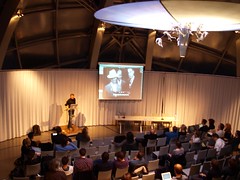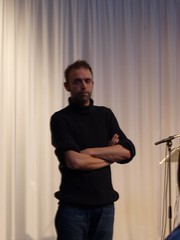System Flaws and Tactics
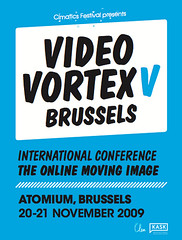
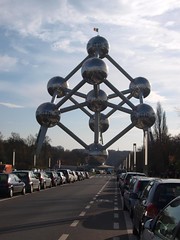
After the opening speech by Bram Crevits (Cimatics) and Geert Lovink (Institute of Network Cultures), the 5th edition of Video Vortex kicked off at the amazing Atomium in Brussels.
The first session addressed System Flaws and Tactics. This session was inspired by the inherent errors, disabilities and restrictions of online video technology that often conduct our behaviour but can also provide inspiring new insights. Liesbeth Huybrechts and Rudy Knoops gave the first presentation of the day, titled ‘Playing that video’. They work at the School of Communication and Multimedia Design (C-MD) in Genk, Belgium, where they lead the research group Social Spaces, on the topic of social, societal and spatial issues, using the internet as a tool and interface.
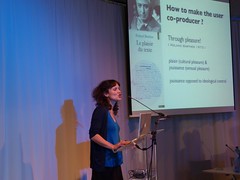
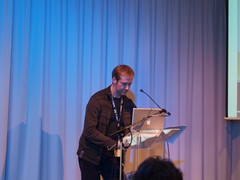
After pointing at the rules of play and playground, and building on theory of tactics and strategy as defined by De Certeau, the presenters explored the diffuse difference between work and play in the age of new media. Knoops pointed out that Google employees get to spend 20% of their time ‘playing’, i.e. working on their own projects. In his recent work, Julian Kuecklich refers to this conflation of play and labour as ‘Playbour’. Knoops and Huybrechts showed impressive work by the C-MD students in Genk, and called for play as a critical tool, and encouraged a practice of tactical play.
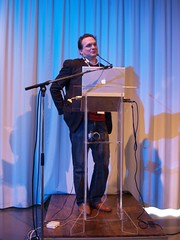
Next up was Brian Willems, who lectures in media culture as well as British and Irish Literature at the University of Split, Croatia. In his talk, titled ‘Blindness: the inability of YouTube to read itself’, he argued that online video often demonstrates blindness,as theorized by Paul de Man, Agamben, and Proust, and rather than being readable. He presented two cases of online video: The Rodney King Story, and Natalie Bookchin’s installation ‘Mass Ornament’, which was presented by the artist herself at the Video Vortex conference in Split (2009).
According to Willems, the Rodney King story demonstrates how difficult it is to read video. In the video, King, lying on the ground, tried to get up when the police attacked him again. The police later stated that they considered his standing up as aggressive behaviour. The video does not clarify whether this was indeed the case. Therefore, Willems argues the video demonstrates its blindness. In this respect, the work by Natalie Bookchin is equally hard to read. Inspired by the chorus lines of the Tiller Girls, she selected and sorted YouTube dance videos so they form a chorus line, through montage, soundtrack and composition. Willems pointed out that the amount of screens, layers and motifs makes this video hard to read, and therefore confronts you with its illegibility or blindness.
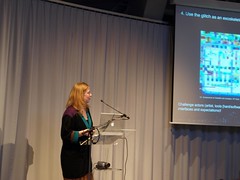

Rosa Menkman, artist, VJ and PhD candidate at KHM presented her Glitch Studies Manifesto, in which she called for a more drain approach of technology studies, which includes the study of its flaws and failures:
1. The dominant, continuing search for a noiseless channel has been, and will always be no more than a regrettable, ill-fated dogma.
2. Dispute the operating templates of creative practice by fighting genres and expectations!
3. Get away from the established action scripts and join the avant-garde of the unknown. Become a nomad of noise artifacts!
4. Use the glitch as an exoskeleton of progress.
5. The gospel of glitch art sings about new models implemented by corruption.
6. The ambiguous contingency of the glitch depends on its constantly mutating materiality.
7. Glitch artifacts are critical trans-media aesthetics.
8. Translate acousmatic noise and soundscapes into acousmatic video and videoscapes to create conceptual synesthesia.
9. Speak the totalitarian language of disintegration.
10. Study what is outside of knowledge, start with Glitch studies. Theory is just what you can get away with!
The session ended with a presentation by the artist Johan Grimonprez, who guided the audience through his You-tube-o-teque. And while the sphere of the Atomium was shaking because of an autumn storm, grimonprez created his own whirlwind, going from the history of the remote control and the invention of zap-proof commercials, to hitchcock pastiches and the swine flu vaccine scandal from 1976. (www.zapomatik.com)
